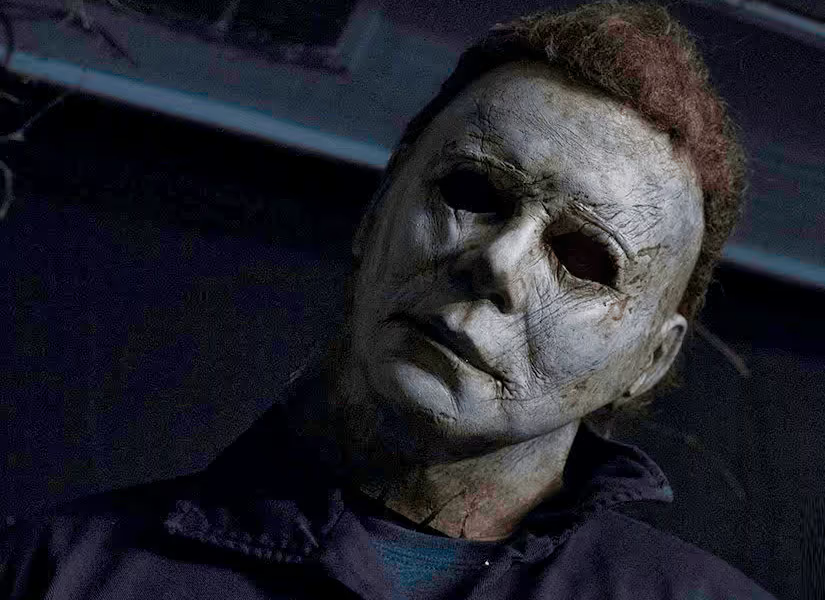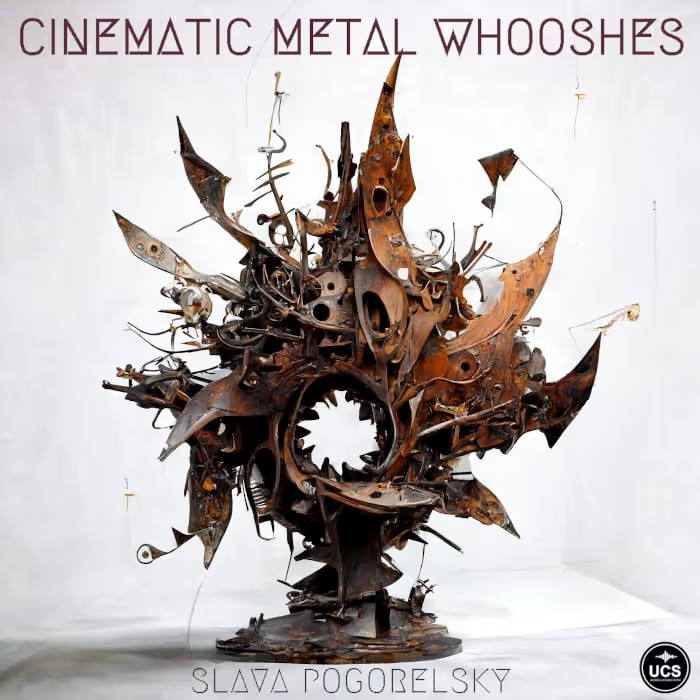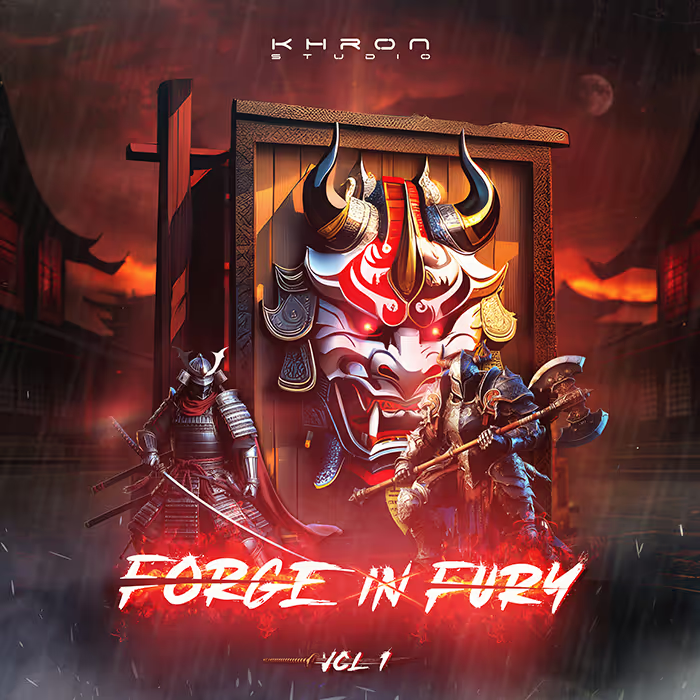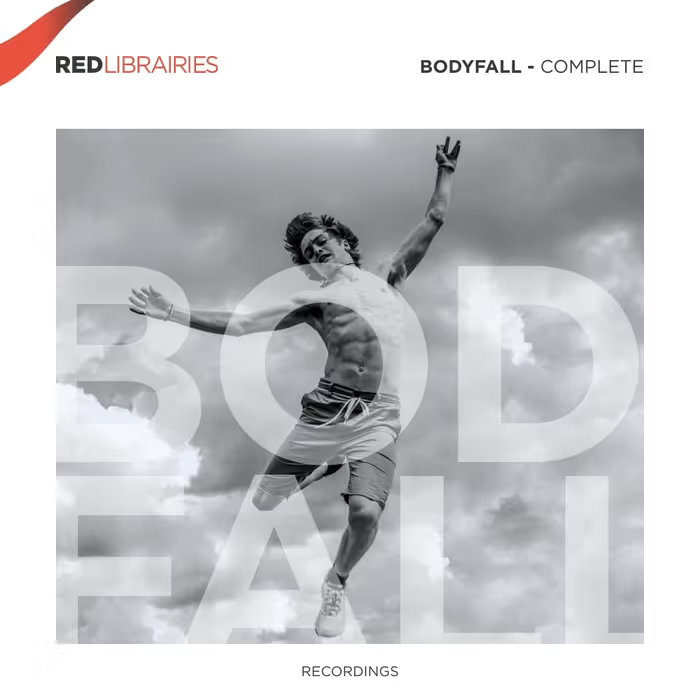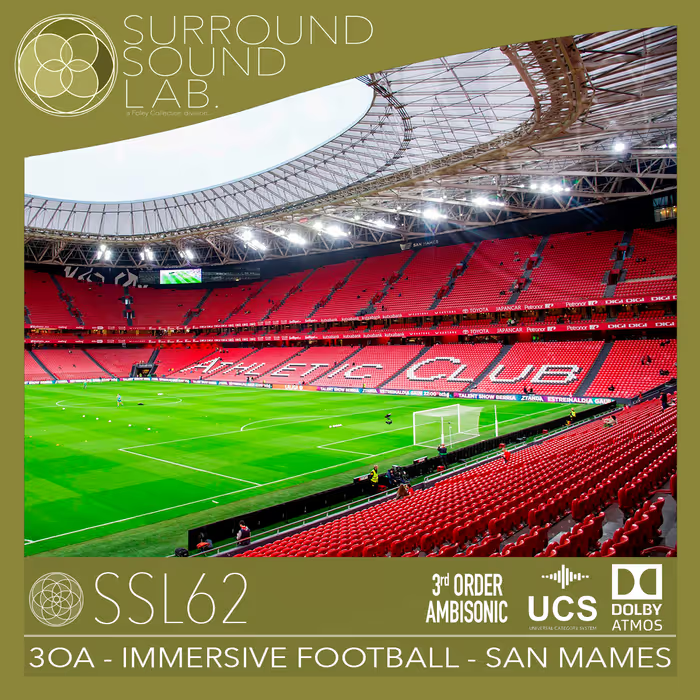This exclusive A Sound Effect interview gets you the story on how sound supervisors Will Files and P.K. Hooker found brutal sonic inspiration in Michael Myers’ no-frills method of murder - and used that to create a soundscape that’s equally simple yet savage.
Forget everything you knew about Halloween sequels and start with the original 1978 Halloween. That’s the jumping off point for Universal Pictures new film Halloween (2018) directed by David Gordon Green, in theaters now. The story picks up 40 years after Michael Myers’ killing spree in Haddonfield on Halloween night in 1978. Michael has since been captured and institutionalized but he manages to escape during a botched bus transfer. Now, he’s off for Haddonfield once again to finish what he started with babysitter Laurie Strode (Jamie Lee Curtis), who, by the way, is NOT his sister apparently. That bit has been retconned in this sequel.
Sound editorial and mix on Halloween (2018) was handled at Sony Pictures Post Production Services in Culver City, CA. Here, MPSE Award-winning supervising sound editors Will Files and P.K. Hooker share details of how they used the original 1978 film as inspiration for creating the gritty, brutal soundtrack for this new Halloween. They also discuss their aesthetic and technical approach to the gunshots, gore, and more!
Did you watch the Halloween films growing up?

Will Files (WF): I’m late to the Halloween party. I didn’t watch the films growing up. I’ve known David Gordon Green (director) for a long time and I ran into him at the Motion Picture Academy of all places and he mentioned possibly directing a new version of Halloween, and I was pleasantly surprised by that. So, I went back and watched the first film for the first time as an adult and I realized how good it was and why Blumhouse and Jason Blum wanted to remake the film and why David was interested in being involved with it. The film from 1978 has a lot of artistic merit. It’s a tightly made film. Many of the sequels degraded in quality over the years and I think the idea was to bring it back to something that rivaled the quality of the original movie.
[tweet_box]Behind the brutal sound of ‘Halloween'[/tweet_box]
Is that why Halloween (2018) is a sequel to the original Halloween and ignores the other sequels that have been made?
WF: I think that was the whole idea, to bring Michael Myers back to life in a way that is worthy of the original film. The way they found to do that was to just pretend like those other sequels didn’t happen and let Halloween (2018) go back to the source. They wanted to have some fun with these characters.
At the end of the day, it’s really these characters that are the most compelling thing about the movie. You can have any movie where there is killing and gore and scares but it doesn’t add up to much if you don’t care about the characters. I think that’s what David has achieved with this film that the first film did really well. And it has a weird sense of fun in a way. You know these characters and you can have fun with them. Then when bad things start happening you really care. I think that’s important for this to be a successful film, both in the horror genre and as a cinematic experience. It’s very compelling that way.
Want more behind-the-scenes horror sound stories? We’ve done a lot of those here on A Sound Effect over the years – here are some highlights:
• How the terrifying sounds of ‘The Haunting of Hill House’ were made
• Behind the creepy sound of ‘Hereditary’ (and why it’s so intense)
• How A Quiet Place’s essential sound was created
• Creating the dark, evil sounds of ‘Annabelle: Creation’ – with Bill R. Dean
• How the haunting sound of ‘The Nun’ was crafted
• Creating the sound of fear for ‘It Comes at Night’ – with Damian Volpe and Robert Fernandez
• Behind the horrifying sound of ‘Alien: Covenant’ – with Oliver Tarney and Michael Fentum
• Behind the scary sounds of ‘Blair Witch’ – with Andy Hay
• How the creepy sound of ‘Lights Out’ was made – with Bill R. Dean
• Young UK filmmaker creates award-winning horror sound: Here it is – and here’s how he did it
• Creating the horrific sounds of ‘The Conjuring 2’ – with Joe Dzuban
Michael Myers isn’t too fancy. He’s pretty much a guy with a knife. How do you make that scarier sound-wise?
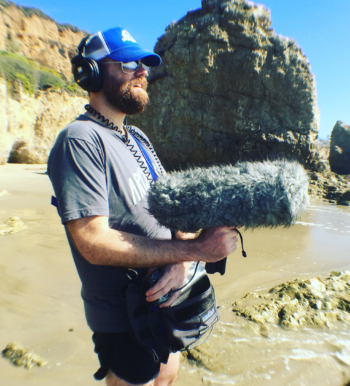
WF: Michael Myers is almost like a robot. The way he moves is very methodical. He doesn’t move fast. He moves very slow and deliberate. He doesn’t waste a lot of effort. He becomes this inhuman thing because of the way he moves. We spent a lot of time making sure his footsteps and his body movements really amplified the economy of movement that his character has. There isn’t a lot of extraneous sound. We kept it tight sounding because the character isn’t sloppy. Michael Myers is very precise.
PH: Sometimes, sonically, it made sense to underplay the design to allow the audience a visceral experience of Michael’s simple horror. At other times, we used a lot of design stingers to amp up and punctuate some of the dramatic beats and scares.
There were definitely some blurred lines between our material and the terrific score from John Carpenter, and he approved. I think it blended together nicely. In fact this movie, for me, was one of the most fun and successful experiences I’ve had blending design and score together.
https://www.youtube.com/watch?v=VLFx30Ijiq0
John Carpenter’s iconic ‘Halloween’ theme
WF: We did some work with Michael’s breathing sound. The mask breathing sound is kind of Michael’s sound. Like Darth Vader’s breaths in his helmet, Michael Myers has his breathing under the mask sound and it’s quite creepy.
We had some of the actor’s breaths from set and we added a fair amount of breathing in post production as well. We recorded a whole track of breathing sounds using the actual mask to get those breaths which we could add in to taste. Certain sections where Michael is stalking people — like when he’s walking through the neighborhood, we’d lean more heavily on those sounds to create tension. The mask is such a part of this movie. Not only is it the face of the character, but it’s also treated almost like a magic totem in a sense, in the way that it functions in the film.
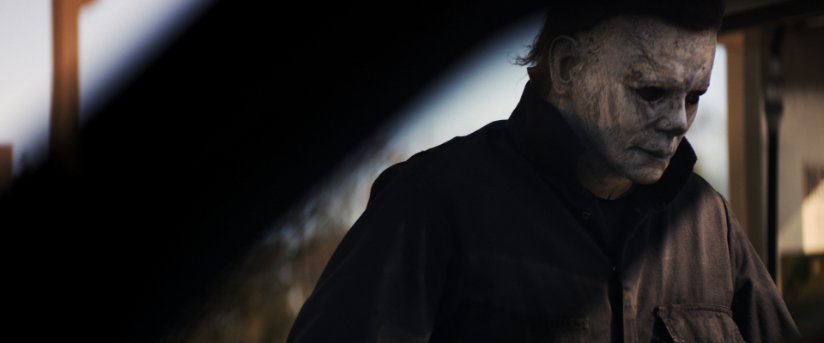
How were you able to use sound to enhance the experience of Halloween?
PH: In general, we really didn’t want this to sound like typical horror, mostly because David made a pretty atypical and unexpected movie, so we had to match that. A lot of the sound is strange and impressionistic. Most of my approach to this was seeing just how weird we could get with things and then to dial it back.
Also, our picture editor Tim Alverson had a lot of great weird sounds in his tracks, which served as a jumping off point and helped to make clear just how strange they wanted to go with it. I think, overall, we weren’t afraid to be bold and out front with the sound. Loud and proud!
It’s not a naturalistic mix of everything, but rather we pull a single sound or a couple select sounds into the foreground and make that uncomfortably crisp.
WF: We tried to take a heightened-reality approach to the film. We didn’t want it to sound unrealistic. It was important that the film feel real because that’s what makes it feel extra creepy and scary but there are also moments that have a heightened reality. We use sound in a way that makes the audience feel a little crazy. We want to put the audience inside the character’s head, in a way, to give the feeling of descending into madness. We use real sounds but they’re played more crisp and present and in-your-face than you’d normally experience them. And we choose which sounds to feature from shot to shot. It’s not a naturalistic mix of everything, but rather we pull a single sound or a couple select sounds into the foreground and make that uncomfortably crisp.
John Carpenter, on composing the haunting Halloween theme
For example, in the opening of the film there are a couple of journalists who have come to try to talk to Michael Myers. They are in a recreational yard with some of the other inmates of an insane asylum. When they show up and try to talk to Michael, the other inmates start reacting to that strongly and start to lose their minds. They’re yelling and singing and doing crazy things. Michael Myers is unfazed by this. It sets him up as being this extra-crazy person because he doesn’t react to all this madness happening around him. We use the sound to amp up the sense of craziness in this insane asylum. That sets the tone for how crazy Michael is and how crazy this place is where he’s been for the past 40 years.
What was your biggest challenge sound-wise on this film? How did you handle it?
We wanted to feel the difference between when Michael was using a knife or an axe. We wanted to feel those different textures so that it didn’t all sound like the same stabby stuff.
WF: I’d say the biggest challenge was to try to honor the original film’s aesthetic while updating it for a modern film. We didn’t want to make it sound like your normal, shiny, studio movie. We wanted to give it some grit. The original film had a simple but effective soundtrack and that is true for the music too. The music that John Carpenter wrote for Halloween (1978) is very similar to the music he wrote for this new one in that it’s not overly complicated. It’s stripped down and very direct. So we wanted to give a similar impression with the sound design. We wanted it to sound real and gritty and not overly complicated. That more spare approach gives the audience more room to lean in and be scared. There isn’t as much density that you sometimes have on modern films. We wanted to go for a vintage aesthetic in many ways. The trick became how do we channel the vibe of the original film while still updating it for a modern audience.
We added grittiness in several ways. In terms of Foley, we asked that they grit up the tracks as much as possible. For example, we didn’t want tappy footsteps. We wanted the footsteps to have some crunch and gravel. Every single sound we wanted to have texture. Anything that moved, or scraped, or bumped, we wanted the audience to feel that. We wanted to feel the difference between when Michael was using a knife or an axe. We wanted to feel those different textures so that it didn’t all sound like the same stabby stuff.
A large part of it comes from our custom recordings. We are always recording our own sounds and using Foley. We lean on fresh recordings as much as possible. Then, it’s all about selection and the sounds that we are choosing to put in the movie. Then there’s the mix. Once you have the right sounds, it comes down to which sounds you are choosing to feature. We didn’t always want all the high-frequency detail of a sound because that might make it sound too modern. So, we might roll-off the high frequencies to give the sound a vintage aesthetic.
We’re trying to add-in the things you can’t feel when you’re in an audience. You can’t feel the heat from the gun or the pressure. You can’t smell the gunpowder. But we have light, and color, and sound, and those are tools we can use to try to give the audience the impression of power.
We are also big fans of tasteful distortion, especially on gunshots. There’s a tendency with modern recording to get the best, cleanest-possible recordings. That’s all well and good but those recordings don’t have a lot of character. Often we will take our nice, clean, modern recordings and run them through various distortion boxes or plug-ins like FabFilter’s Saturn, or Soundtoys’ Decapitator, and crunch them up and mess them up so you get a 70’s or 80’s kind of feel because the recording equipment wasn’t as good back then. You get some distortion inherent in the recordings or the mixing process that you don’t get these days because everything is a perfectly clean digital recording. Again, there’s not as much life in it. So, a little tasteful distortion goes a long way in terms of adding character to sounds. That can make things feel larger and often that’s what we’re trying to do with sound. We’re trying to add-in the things you can’t feel when you’re in an audience. You can’t feel the heat from the gun or the pressure. You can’t smell the gunpowder. But we have light, and color, and sound, and those are tools we can use to try to give the audience the impression of power. Sometimes adding distortion to a gunshot can help to make it feel like it’s so powerful that it’s overloading the microphone or the speakers. That subtly suggests to the audience a sense of bigness that you wouldn’t get from a perfectly clean recording.
Another thing I like to do with gunshots is to have a clean version and a dirty version of the sound and mix the two together. With the dirty one, I’ll compress it really hard. It’s a technique of parallel compression where you have the same signal, one uncompressed and one highly compressed. Then you take the attack from the natural recording and the body and character from the compressed or distorted signal. Once you mix them together, you get the best of both worlds. You get all this body and character but you still get the snap of the original gunshot.
PH: To be honest, there weren’t a lot of challenges on this one. I’m not saying I’m super awesome and I totally nailed it (hahaha), more that it was always really clear where the filmmakers were coming from and they were so available and collaborative. Anyone, who does what we do, would tell you that communication and collaboration are key features to making this process run smoothly. I was always receiving clear and constructive feedback on the work we were doing so I had the freedom and confidence to get weird and try stuff out.
Aesthetically, how did you want the gore in the film to sound? Creatively, how did you accomplish that?
PH: The gore was pretty explosive, sonically and on-screen. Part of what is scary about Michael Myers is the sheer brute force and violence of his attacks. It wants to sound like a fight — like a punch and stab together, and we did a fair amount of that.
Certainly, there is some over-the-top gore in this movie, and we gleefully accommodated it, but we focused more on the brutality. That’s pretty much all in the hard effects and not the Foley. Our Foley team did a great job with a lot of the more boiler plate Foley stuff and left us to go big and amp up on the gore, stabbing, and violence.
WF: We like to use vegetables of various kinds and also we’ll go to toy stores and get some slime. That gives us even more textures to play with. One thing we’ve been using quite successfully recently is seafood guts. It makes lots of good, gross sounds. That sounds disgusting, but if it gets the job done then we’ll do it.
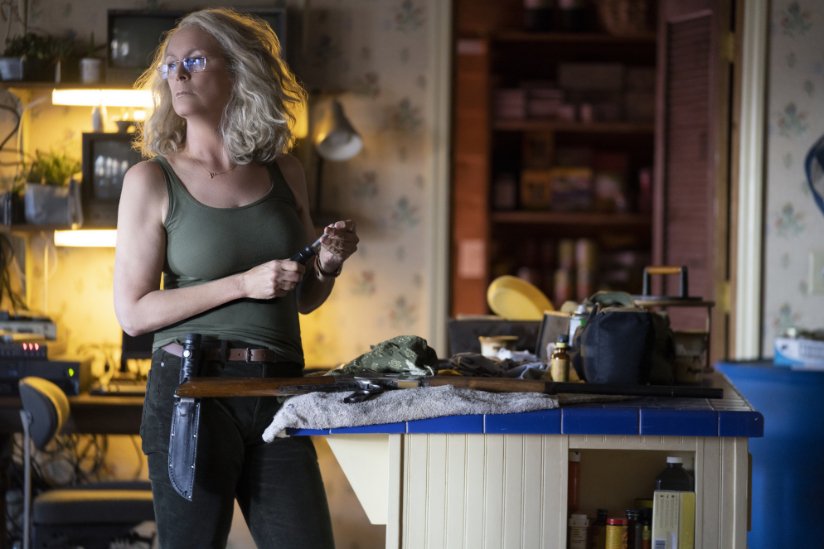
What was the trickiest scene for sound? Why?
PH: The very end was the hardest to get right. It’s a mix of big violence, creepy quiet atmosphere, surreal and impressionistic sounds, playing emotion over reality, and all while dancing around with the score. It really represents everything challenging about the whole film.
WF: That big action scene at the end of the film has multiple weapons and different locations and we wanted to use sound to help tell who was where. We tried to use the sound to help keep that clear for the audience. Some characters are in the basement and some are running through the house, and the shots are cutting around to different places and the scenes are dark. We wanted to use sound to help the audience navigate these spaces.
I think the opening scene at the asylum was the trickiest to mix because it’s such a subjective scene. It’s an expressive scene that’s not meant to be literal or realistic. When you do those, they’re harder to mix because it’s open to your interpretation. It’s also the most challenging and yet rewarding scene to work on because you end up with something that’s interesting and cinematic.
We mixed the film in 5.1 at the Anthony Quinn Theater at Sony Pictures Post Production Services, which is a beautiful stage.
Bonus: Explore the Ultimate Horror Sound Guide:

Did you have a favorite scene for sound? Why?
PH: SPOILER ALERT — In the end there’s a great sequence of Laurie (Jamie Lee Curtis) searching through a quiet, rustic home for Michael. There’s a lot of creaking and breathing and some atmospheric music and design. I really like the detail work that went into the sound there — creaky floors, breathing, Foley…it really enhances the horror.
And, in general, as a sound designer, I like the quiet stuff. There’s so much drama, horror, comedy, etc., that can be mined out of quietly sitting with the characters or following them around. I think it’s a very confident stance for a filmmaker to allow for long moments of quiet. Little creaks and winds, quiet breaths, that stuff can be really cinematic and lush.
Did you do any fun field recordings for Halloween?
PH: I actually used some great recording I did for another film of me walking around this big old craftsman home I used to live in: up and down the stairs with boots, sneakers, and barefoot, fast, medium and slow, close and far. It was really comprehensive and this is the first film I’ve been able to feature those recordings. They’re all over the end sequence and they really added to the creepiness.
What are you most proud of in terms of sound on Halloween?
I have to say the integration of design and score on this one is pretty special to me. There was a real egoless hand off between the two.
PH: I have to say the integration of design and score on this one is pretty special to me. There was a real egoless hand off between the two. There are a couple places where we stepped back and let the music replace our stuff and a couple where we completely replaced the music cue. Throughout, I think the music and design work really well together. That was a great outcome because I’m a John Carpenter super-nerd and it was important for me to respect the original 1978 film on every level. The music he made for this movie was really terrific. It was such a natural extension of the original 1978 score, but also fresh and unexpected. The way it all played out is definitely something I’m proud of and I’m so honored to be in any kind of creative sandbox with John.
WF: This film feels to me like a Halloween film. I’m proud that the music and sound support the film in a dramatic way. They are an extension of what David was trying to put on the screen, and we did it in such a way that honors John Carpenter’s original film and expands on the aesthetic that he established 40 years ago.
A big thanks to Will Files and P.K. Hooker for giving us a look at the ruthless sound of Halloween – and to Jennifer Walden for the interview!

